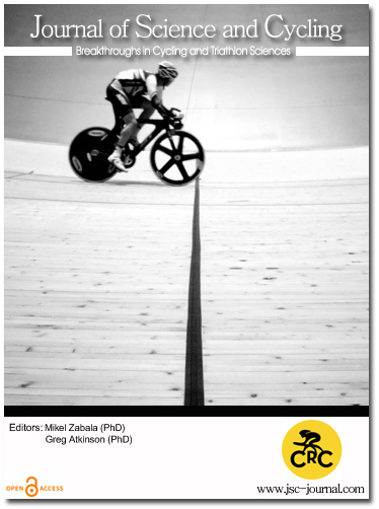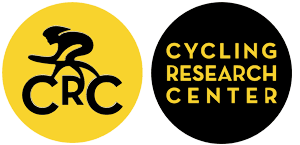Physiological and performance characteristics of road, mountain bike and BMX cyclists
Keywords:
Cycling, Power Profile, Mountain Bike, BMXAbstract
The purpose of this research was to quantify several physiological and power output characteristics of high-performance road, cross-country mountain bike (XCMB), downhill mountain bike (DHMB) and bicycle motocross (BMX) cyclists. Twenty-four high-performance cyclists (27 ± 7 yr; 182 ± 6 cm; 79.3 ± 9.7 kg; ∑7SF 69 ± 27 mm; 61.4 ± 9.9 mL·kg-1·min-1) completed both an incremental ramp test and a power profile assessment (PPA) across two separate testing sessions. The PPA consisted of maximal efforts lasting 5 s, 15 s, 30 s, 60 s, 240 s, and 600 s. The ramp test provided measures of VO2MAX, maximal aerobic power (MAP) and individual VO2-power regression equations, whilst the PPA determined metabolic costs, anaerobic capacity and power output across each effort. The data demonstrated that road and XCMB cyclists possessed significantly (p<0.05) higher VO2MAX (65.3-69.6 vs. 52.4-55.3 mL.kg-1.min-1) and anaerobic capacities (1.7-1.8 vs. 0.9-1.3 L) than the DHMB and BMX cyclists. Further, the same cohorts produced significantly (p ≤ 0.05) greater MAP (5.8-6.3 vs 4.4-4.7 W.kg-1), as well as relative mean power output across efforts lasting ≥15 s. The BMX and DHMB cyclists demonstrated greater peak power outputs (~200 W) across the shorter efforts of the power profile. The data demonstrate that the road and XCMB cyclists possessed higher aerobic physiological capacities and power outputs than the DHMB and BMX cyclists. The latter disciplines possessed greater explosive power outputs. Together, these findings reflect the specificity of selected traits that are possessed within each cycling discipline.
Downloads
Published
How to Cite
Issue
Section
Copyright (c) 2014 Journal of Science and Cycling

This work is licensed under a Creative Commons Attribution-NonCommercial 4.0 International License.
Authors contributing to Journal of Science and Cycling agree to publish their articles under a Creative Commons CC BY-NC-ND license, allowing third parties to copy and redistribute the material in any medium or format, and to remix, transform, and build upon the material, for any purpose, even commercially, under the condition that appropriate credit is given, that a link to the license is provided, and that you indicate if changes were made. You may do so in any reasonable manner, but not in any way that suggests the licensor endorses you or your use.
Authors retain copyright of their work, with first publication rights granted to Cycling Research Center.






